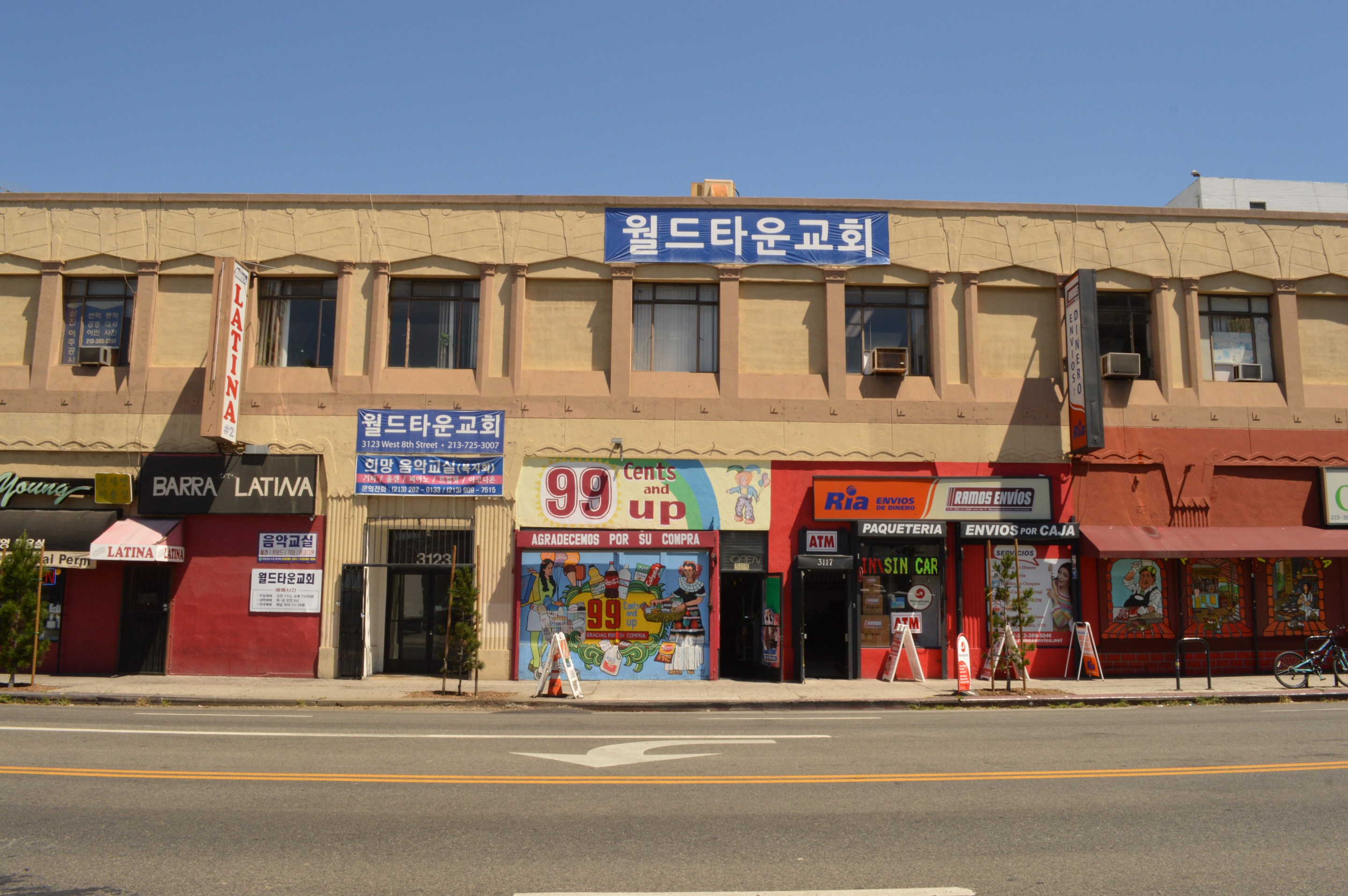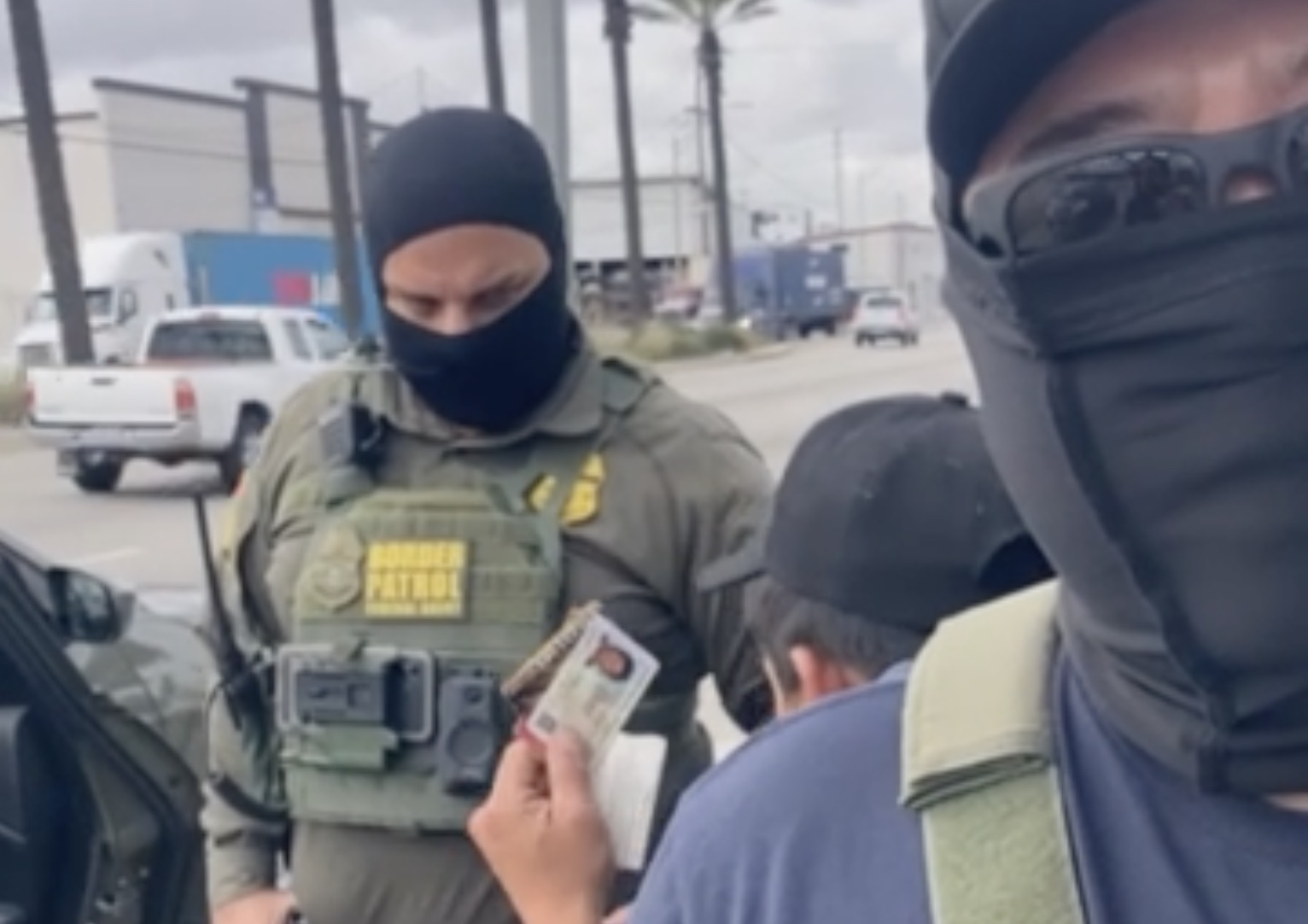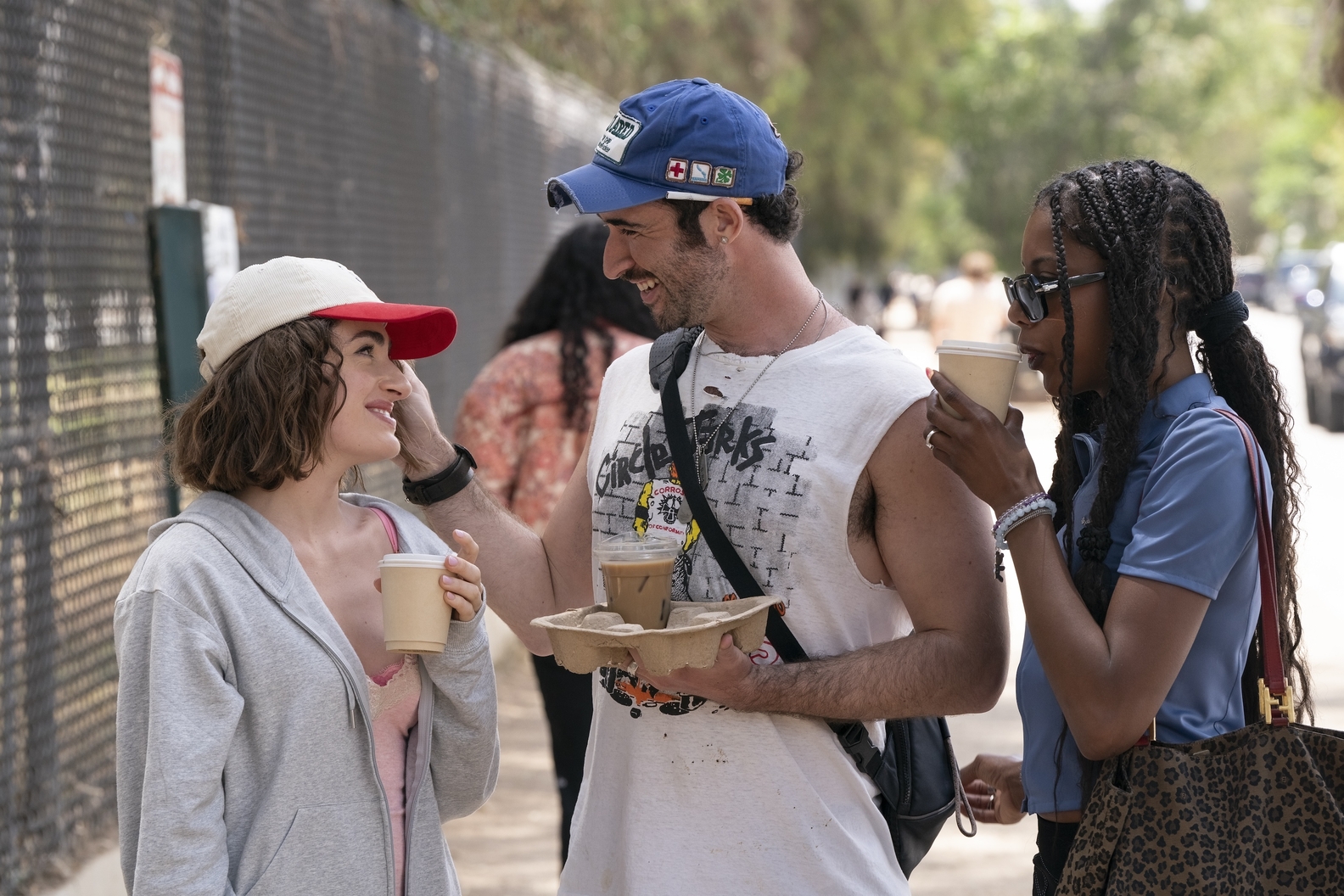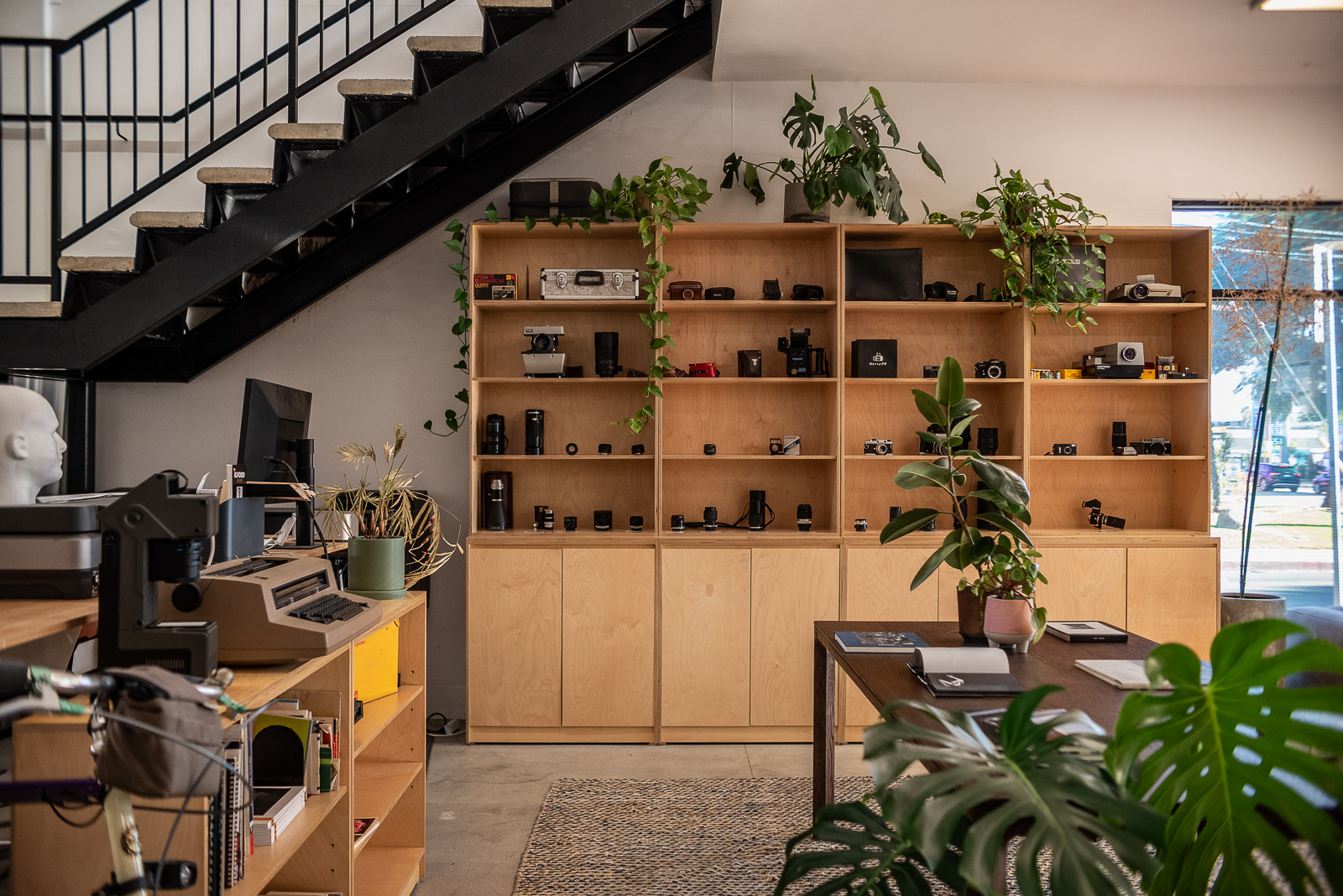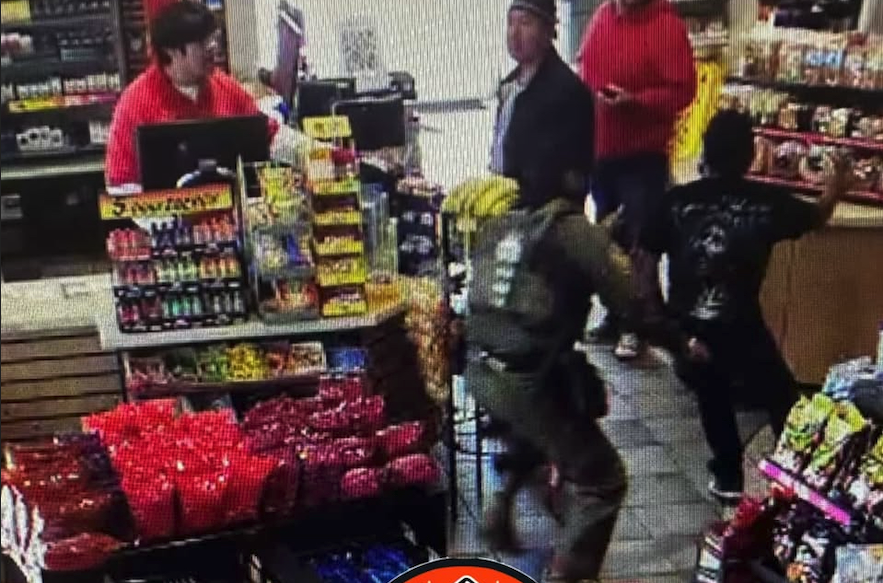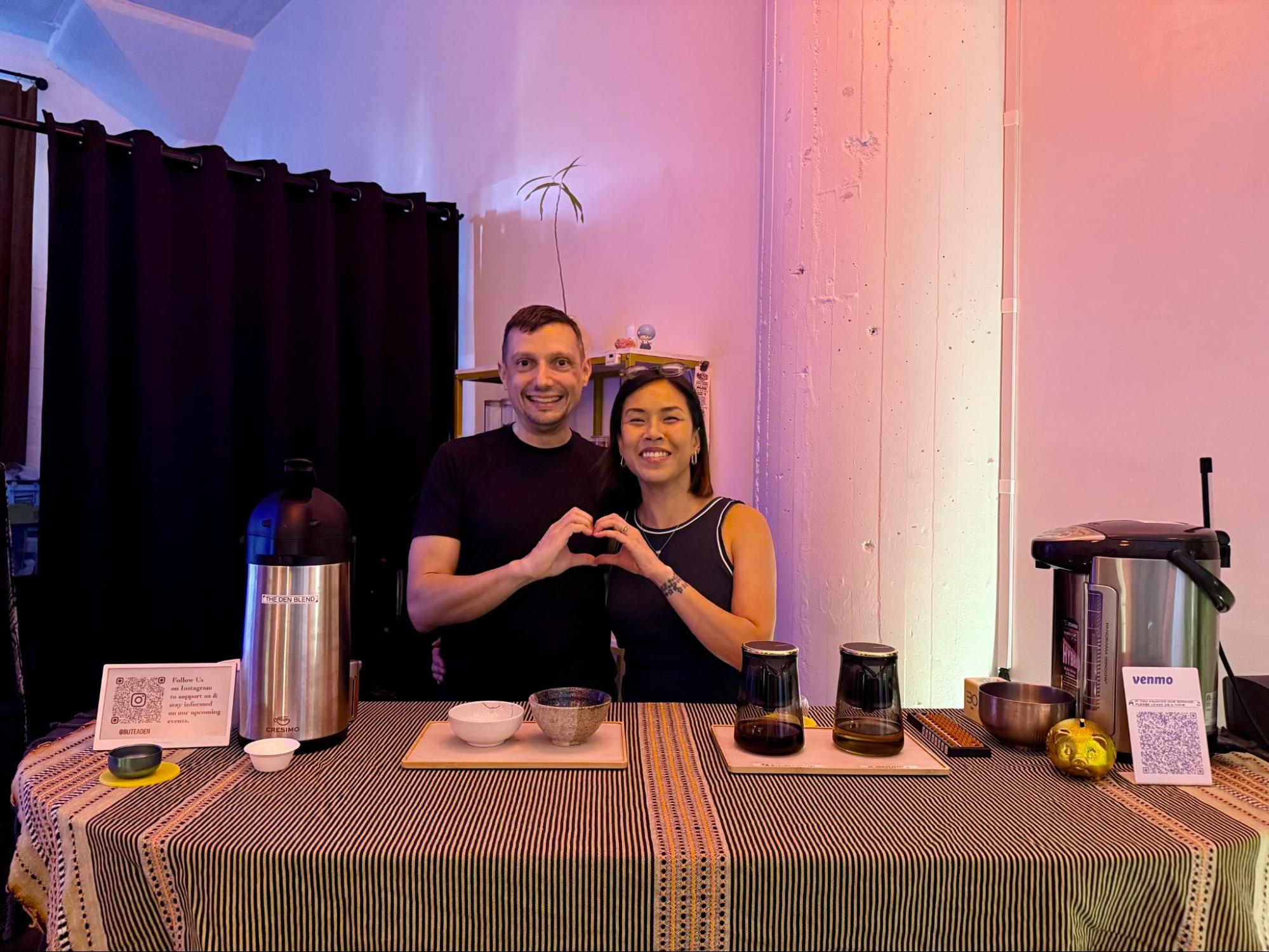[dropcap size=big]P[/dropcap]astor Jung Oh Kim’s Los Angeles story begins in Toronto. He was in elementary school when his sister got married and suggested that their family move to Canada. Though he learned some English in Korea, he was essentially starting a new life amongst others who did not speak—let alone look like him.
“Those challenges are good experiences. Once you overcome them, they become your assets,” said Kim.
Kim’s story would resonate with a lot of Korean families in the ‘70s, just a handful of years after the Hart-Celler Immigration Act was signed. Leaving behind more than just a home, they needed to regain a sense of belonging. In these times of uncertainty, many of them turned to their Christian faith.
“When immigrants came, they either didn’t speak English or didn’t speak good English, so there was a big demand for churches to help build communities,” recounted Kim. At the time, English classes were most accessible to those who were studying to become ministers, elders, or pastors.
Church was also the space to build networks that would help Koreans find assistance or jobs. Pastors and elders encouraged new immigrants to start their own businesses; after all, making money was the first step to sustaining a life in America.
For example, Young Soo Song began Grace Plumbing in Koreatown in 1994 after moving from Alaska eleven years beforehand. Around this time, about 74 percent of immigrants in Koreatown had been in the country for no longer than a decade. Plumbing wasn’t a learned trade with which Song had come into the country. He acquired the skills from someone in his network who worked in plumbing. Song pursued the trade immediately as a means to get his life off the ground in a new city.
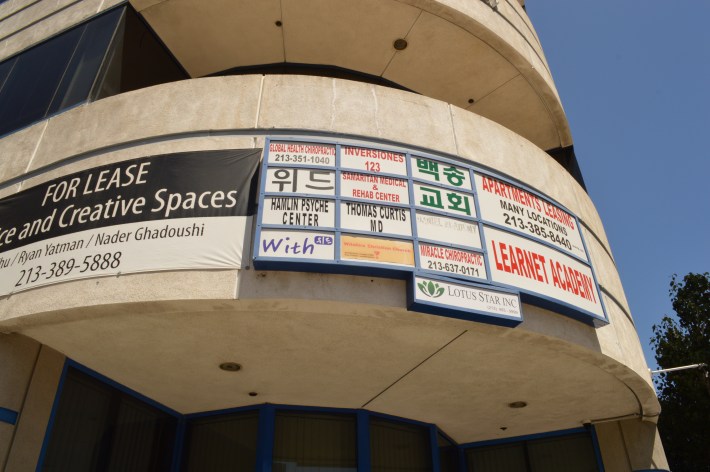
When he opened shop, he sought advice from his elders at Grace Church (은혜교회 or “eun-hye kyo-hae”), which is now in Glendale. He found himself nervously calculating the different factors that go into starting a business but choosing the right name bogged him down the most. Hearing his plight, Song’s pastor told him simply to start. “I asked [him] what I should name [my business] that will allow me to have a good beginning,” said Song recalled recently. “I named it Grace Plumbing after the church told me that there’s nothing to worry about…just lead with faith and start.”
Perhaps Song’s elders knew that the money would follow. One advantage of having a tight network: Churches could point their members to the businesses that other members had begun. This network would grow in number over the decades. In time, church communities became so supportive of each other that it didn’t feel like a leap of faith to start life anew in Los Angeles.
Koreatown, Land of Churches
Within its 2.7 square miles perimeter, Koreatown has more than 115 churches or faith-based establishments, according to the yearly Korean Business Directory put out by the Korean Times.
Christianity is a major bloodline that runs through Koreatown, which began forming with Korean migration in 1970s. The movement brought a proliferation of Christian denominations because historically, South Korea has provided the world's second-largest number of Christian missionaries, surpassed only by the United States.
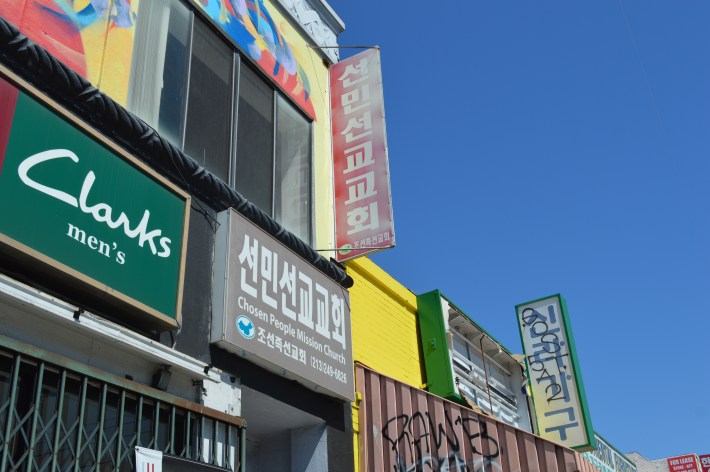
Some of its churches stand proud and visible as you are gridlocked in traffic, standing out amid the never-ending amount of restaurants. Others, like an after-hours merchant space or someone’s home that doubles as an informal place of worship, are neighborhood secrets.
It’s common for religious Korean immigrants to gather in a rented space of an office building, a merchant’s shop after hours, or even an apartment on a residential street.
Baeksong Church on 6th Street sits in the basement of a business office. World Town Church is nestled in mixed-use building on 8th Street. Sun Min Church sits atop a two-story building right above a GNC on Western Avenue and 2nd Street.
All three churches can’t be spotted with a cross or other religious insignia. Even if you knew enough Korean to recognize the word “교회” (“Church”) on window displays, you would still find them hard to spot. The signs are usually small, not existing to draw in new folks “just passing by.” These are the signs for Korean-Americans who already know about it through word-of-mouth in their community.
“Being an immigrant myself, I see the people in the Bible from a different perspective. It helps me see how churches should exist for Korean-Americans. It’s meant to be a place where immigrant life feels more peaceful.”
Pastor Kim currently serves at Eastern Presbyterian Church as its Senior Pastor, a post that was passed down to him by founder Pastor Yong Lee. The two were acquainted from Kim’s childhood days in Toronto, where his father had kept in touch with Lee. It was only two years ago that Kim received the call from Lee, asking if he’d take over his duties at Eastern Presbyterian Church. Kim was in Texas at the time the opportunity was presented, but it was clear to him that he would move to Los Angeles for it.
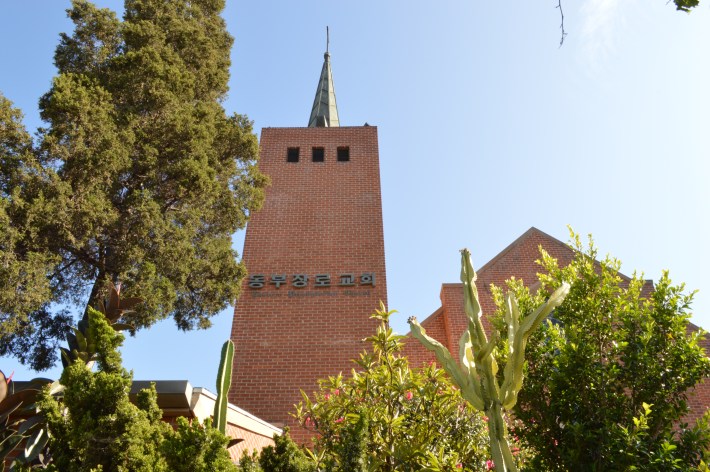
Kim embraces all the traveling he does for his faith-based work. “In the Bible you see a lot of people—men and women—who are immigrants, like Abraham and the generations after him,” he noted. “Being an immigrant myself, I see the people in the Bible from a different perspective. It helps me see how churches should exist for Korean-Americans. It’s meant to be a place where immigrant life feels more peaceful.”
Christianity and the Korean Identity
Christian faith often gets credited for bringing strength and solace to Koreans. In the 19th century, American missionaries helped Korean nationalists fight for freedom from Japanese occupation. After gaining its freedom, the newly democratic government excited the nation with robust plans for economic growth and travel. South Korean Christianity found its wings and went West. By 2008, the vast majority of the U.S. Korean population were Christian.
By 1973, the year Pastor Lee found Eastern Presbyterian Church, many other ministers and elders had come to town like bands of brothers. They needed to build more churches to meet the needs of a growing Korean population. These brotherhoods formed within religious organizations helped Los Angeles feel less foreign, as was the case for Pastor Eric Yoon at Joyful Senior Church. Yoon and his peers attended the same Christian university in South Korea; together, they share the space within Koreatown’s Lordland University building to run their own individual churches.
As for the seminal Korean-owned businesses that have been in town for 30 or more years, the owners have used their store names to honor their spaces a church away from church.
“I share the space with other alumni,” Yoon explained. “We were supportive of each other as we moved to Los Angeles on our respective timelines. Now we each take care of our own different church organizations that reach different age groups.”
As for the seminal Korean-owned businesses that have been in town for 30 or more years, the owners have used their store names to honor their spaces a church away from church. For example, Zion Market, a Korean-owned supermarket chain with a popular location on Sixth Street, presumably gets its name from the book of Psalms meaning “city of God.” There’s also Saint Cross, a jeweler whose name is a direct reference to the crucifixion of Jesus Christ.
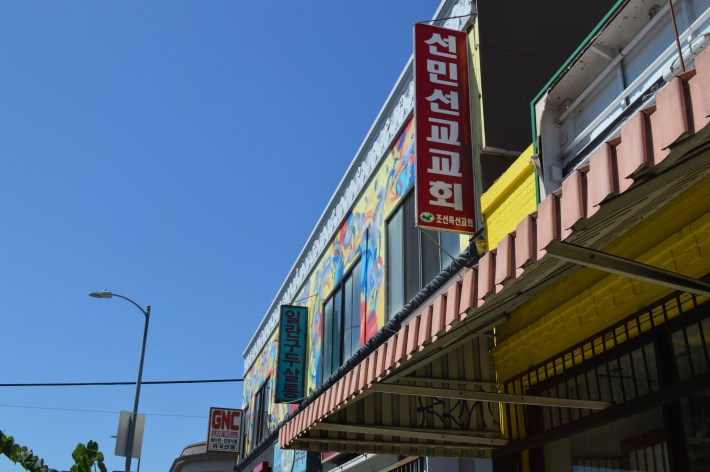
Alongside the business names that evoke religious themes are the ones who make their workspaces church-friendly. Sophia Lee of Sophia Hair Salon has sermons and gospels playing in her shop every day, a deliberate choice to skirt the norms of how non-denominational vendors should look. But for Lee, the audio plays not to proselytize but rather to make her workspace feel comfortable.
“[The gospels] are important to me, but I don’t tell clients too often about my Christianity,” she said. “I put on gospels, but if people want my service, I will not turn them away because of faith.”
Attending a church that is closer to home means Grace Huang, of Eden Hill Floral Shop, has to make her store a feel like a place of reverence as well.
Many shop owners who first planted roots in Koreatown moved to Orange County and Pomona to begin families, but their businesses remain in the Los Angeles enclave. For Huang, her church and home are in Pomona, but the shop has been in the same spot for almost 40 years. Wherever she can, she fills her workspace with Biblical reminders.
“I try to do a lot of church work in my free time but it can get very busy traveling to and from the shop,” said Huang. “If I do have free time I go to prayer services before I drive to Koreatown, but usually I’ll figure out what I can do to make my shop feel close to the church.”
The Next Generation of Christian Churches
Newer generations of Korean-Americans continue to move outwards, which affects Koreatown’s churches. The mass departure of families means formerly sturdy networks can short-circuit. Word-of-mouth is effective within particular generations, but it’s fraying in between them. It is no longer as reliable of a recruitment tactic, which means churches must relocate to suburban neighborhoods, merge with one another, or shutter.
“Churches are going through a very critical stage as we transition from first-generation Korean-speaking communities to a new majority of Koreans who do not speak the language,” said Kim, whose Eastern Presbyterian Church largely serves Korean-Americans over the age of 60.
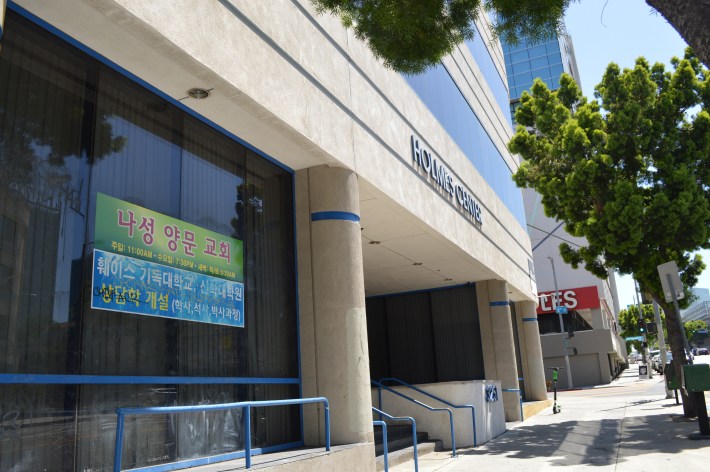
As Korean-American families drift farther away from the Koreatown hub, the churches are learning to adapt. Pastor Kim wants to learn from newer generations while also help them remember their roots.
“Growing up in Canada and America, I myself most likely would have lost the Korean language and heritage,” he recalled. “Language barrier would have led to a relationship barrier. The Church played a significant role in reminding me of where I’m from.”
With this personal insight, Kim tries a new outreach method that asks younger Korean-Americans to consider their dual identities. “When I was in college, I was asking myself, ‘Am I American or am I Korean?’ It was lingering. When I became a pastor, I wanted us to try to find our identities together.”
No matter what changes in the neighborhood as the city enters a new era of development, the “교회” signs on windows of larger commercial buildings serve as reassurance that the neighborhood has not forgotten the faith on which it is built.
For the smaller organizations that remain in inconspicuous spaces, the prevalence of their impact is found in the ways by which the Korean-speaking population communicate in Koreatown. The Korean Business Directory is an apt place to be discovered by churchgoers and ministries.
Christened as an infant (모태신앙 or “mo-tae shin-ahng,” meaning a belief in God from the mother’s womb), Samuel Sae-Wok Park began his Love Mexico mission center in 2004 from his home.
“When I first began, I needed to use my apartment address in order to have a listing in a directory. That was the right way to start because having my mission listed anywhere would bring groups from other churches to me,” explained Park.
Nowadays Park finds steady financial and spiritual support from Na Sung Church in La Habra Heights, outside of Fullerton, where he has served as an elder for five years. Technically, his mission can continue on the church’s support alone. Nevertheless, he keeps his listing in the Korea Times Business Directory as his residential address. It’s a way of remaining visible to the relevant smaller groups within the Koreatown community.
“There are some things that America cannot replace. Being a Korean is one of them."
In the neighborhood’s row of multi-story apartment buildings, individuals like Park blend in. In that directory book read only by the OGs of Koreatown, they serve an important part of the community.
No matter what changes in the neighborhood as the city enters a new era of development, the “교회” signs on windows of larger commercial buildings serve as reassurance that the neighborhood has not forgotten the faith on which it is built. Christianity has, and forever will have, a hidden prevalence in Koreatown. Faith is deeply intertwined with the history of Korean immigration to this neighborhood.
“There are some things that America cannot replace. Being a Korean is one of them,” said Kim.
